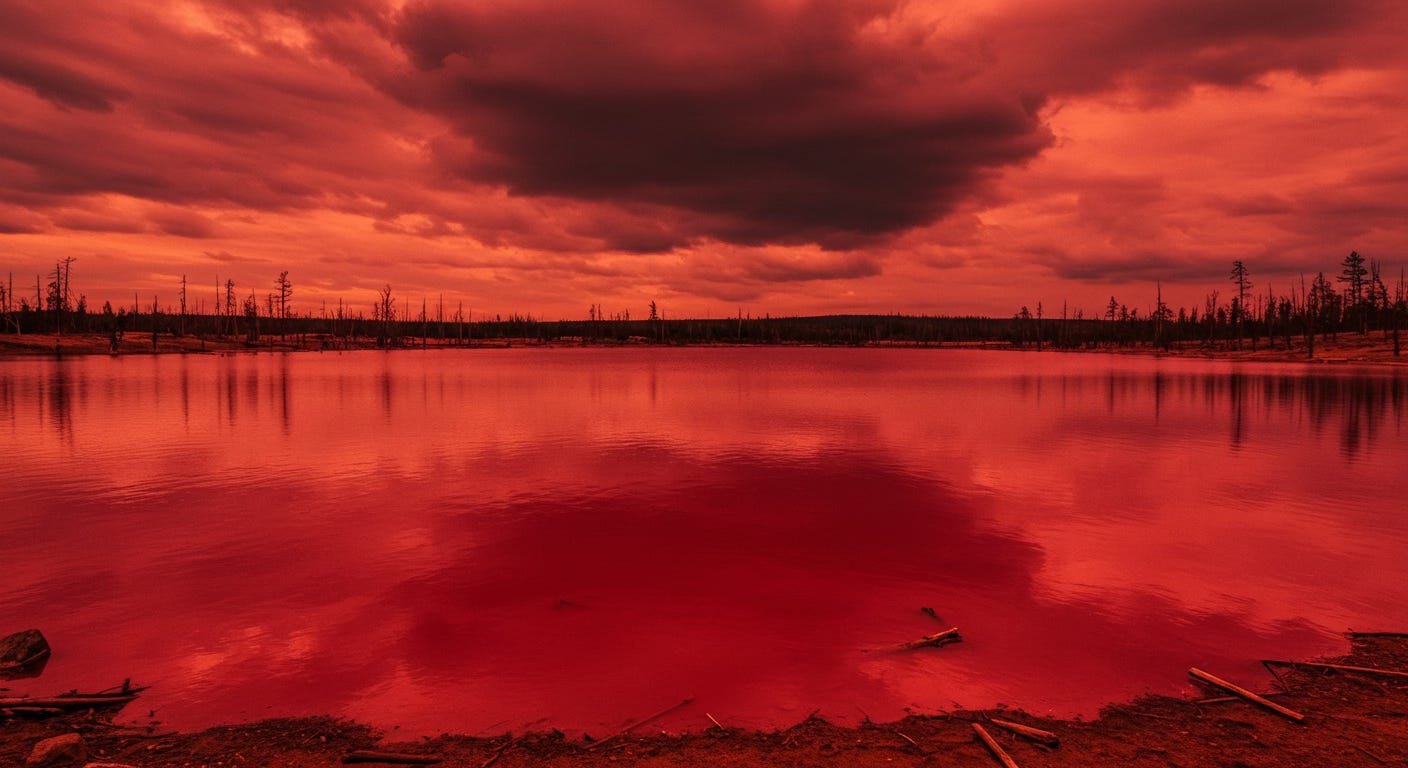Lake Karachay
The Evolution of Earth's Most Contaminated Body of Water
Lake Karachay (also known as Karachai or озеро Карачай) represents one of the most significant cases of anthropogenic radionuclide contamination in history. Located in the southern Ural Mountains within Russia's Chelyabinsk Oblast, this small water body gained notoriety as the most polluted place on Earth due to its role in Soviet nuclear weapons development. Originally a natural endorheic lake (a lake with no drainage system, like the Great Salt Lake in Utah) within the Techa River system, prior to 1951, it served as a relatively unremarkable feature of the West Siberian landscape, covering approximately 0.5 square kilometers (about 123 acres, and smaller than most golf courses) and maintaining an average depth of about 9 feet. Since the lake has no outlet, it appeared ideal for containment disposal.
A quick note on the radiation units used in this post, because I’m sure most people are not familar with them. These units are used for different purposes in radiation measurement - mSv for human health impacts, PBq for total radioactivity amount, and röntgens (historically) for exposure levels.
mSv = millisievertsRegulatory limit is 1 mSv/year above background for the general population
CT scan gives approximately 10 mSv, Dental X-ray gives 0.01 mSv, radiation therapy gives 20,000+ mSv targeted at the tumor.
PBq = petabecquerelA unit for measuring radioactive decay events per second
A lethal dose can't be directly expressed in PBq because PBq measures the amount of radioactive decay, not its biological effect. It's like trying to describe how dangerous a fire is by only stating how much fuel it has - you need to know how concentrated it is and how and how close you are to the fire.
R = röntgenA legacy unit of measuring radiation exposure in air, specifically measuring gamma radiation, replace by Sv: 1 R = 9 mSv

The lake's transformation began in 1948 with the establishment of the Mayak Production Association (Производственное Объединение «Маяк»), initially known as Chelyabinsk-40. This facility was constructed to produce weapons-grade plutonium for the Soviet nuclear program. The complex's operation generated substantial quantities of high-level radioactive waste, creating an immediate need for disposal solutions. Starting in 1951, Mayak began directly discharging medium and high-level radioactive waste into Lake Karachay. The decision emerged from earlier complications with releases into the Techa River system, which had resulted in downstream contamination affecting local populations. Over 124,000 people living in riverside villages were exposed to elevated radiation levels. The most severely affected settlement was the village of Metlino, where residents received average doses of 140 mSv/year. While 140 mSv/year isn't immediately dangerous like the exposure levels at Lake Karachay (where one hour of exposure could be lethal), it represents a significant chronic radiation burden that would cause long-term health effects in the exposed population.
For comparison, during the Fukushima accident, evacuation orders were issued for areas with projected doses of 20 mSv/year - just one-seventh of what Metlino residents experienced chronically.
By 1951, the facility had released an estimated 100 PBq (petabecquerels) of long-lived radionuclides, including Cesium-137 (half-life: 30.17 years), Strontium-90 (half-life: 28.8 years), and various isotopes of plutonium. The radiological inventory of Lake Karachay reached unprecedented levels. Exposure measurements taken in 1990 revealed that standing on the shore for one hour would deliver a lethal dose of 600 röntgens. So yes, 100 PBq is extremely dangerous, especially when concentrated and containing long-lived isotopes. The fact that this amount was intentionally discharged into a small lake makes it one of the most intense point sources of radiation ever created by humans. The primary radiological hazards stemmed from direct gamma radiation from accumulated radionuclides, wind-driven dispersion of contaminated sediments, and groundwater contamination through infiltration.
A significant environmental crisis occurred during the spring of 1967 when an exceptional drought reduced Lake Karachay's water level significantly. Exposed contaminated sediments were carried by winds across approximately 1,800 square kilometers, exposing approximately 500,000 people to elevated radiation levels. The resuspended particles contained approximately 22 TBq of radionuclides. This incident highlighted the urgent need for remediation efforts.
Treatments
Beginning in 1986, Soviet authorities implemented an ambitious remediation program to address the lake's contamination. The primary strategy involved filling the lake with hollow concrete blocks, followed by successive layers of gravel and rock. This engineering solution aimed to prevent wind dispersion of contaminated sediments, reduce external radiation exposure, and minimize infiltration into groundwater systems. The remediation effort used over 500,000 hollow concrete blocks and multiple layers of gravel, rock, and soil, creating a final cap thickness of approximately 2 meters.
Minerals can be used to help entomb the most toxic radiation emitters. I wrote a post about this in few months back, and is definitely relevant to modern day nuclear energy ambitions.
Crystals and Toxic Waste
The mineral kingdom is full of interesting and useful minerals that can mimic biological processes. Just as finding new disease cures from plantstakes a lot of trial-and-error, walking down a trail and finding plants to eat, or using plants and minerals
By 2015, the lake basin was completely filled and covered, effectively converting it into a solid waste storage site. However, significant challenges remain. The contaminated groundwater plume extends approximately 4 kilometers from the original lake bed, with monitoring data indicating migration rates of 80 meters per year for Strontium-90 and 40 meters per year for Cesium-137. The site requires ongoing monitoring and management due to continuing radioactive decay processes, potential for contaminant migration, need for maintenance of engineered barriers, and requirements for institutional control.
Lake Karachay serves as a crucial case study in environmental radiochemistry and nuclear waste management. The site has provided valuable data regarding the long-term behavior of radionuclides in aquatic environments, effectiveness of engineering controls for contaminated sites, environmental transport mechanisms for radioactive materials, and biological impacts of chronic radiation exposure. Its legacy continues to influence nuclear waste management practices and environmental protection strategies globally. The history of Lake Karachay demonstrates the complex interplay between technological advancement, environmental impact, and remediation challenges.
So, where does it stand now?
The dry lake bed requires extensive ongoing management and monitoring efforts. This includes regular testing of groundwater and soil conditions, maintenance of the engineered barriers that contain the contamination, and strict institutional controls to prevent unauthorized access to the area. While the immediate hazard of exposed radioactive sediments has been addressed through the capping project, the site will remain a long-term environmental concern requiring active management for many decades, if not centuries, due to the long half-lives of the contaminating radionuclides. The legacy of Lake Karachay continues to serve as a sobering reminder of the long-lasting impacts of nuclear waste disposal and the importance of proper environmental stewardship.



